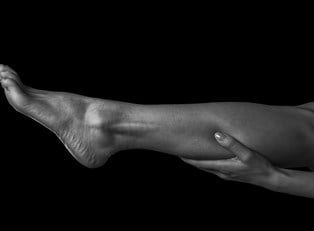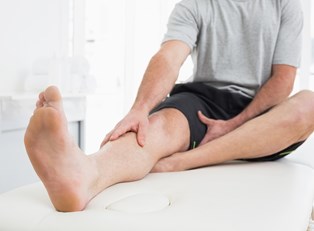Restless Leg Syndrome (RLS) can be an extremely obnoxious and even painful neurological disorder for those who suffer from it. Just when it’s time to relax or lay down for the night, the legs reach their most uncomfortable point and are overcome by strange sensations and overwhelming urges to move around. This not only makes it difficult to fall asleep but almost impossible to stay that way. While the causes of RLS are mostly unknown, there are things that can help ease the unpleasantness.
Be wary of certain medications for other conditions.
Certain antipsychotic, antidepressant, and antiemetic prescriptions as well as over the counter medications with antihistamines for allergies and cold symptoms that also cause sedation tend to increase the symptoms of RLS. These drugs change the way the body produces dopamine and serotonin, among other chemicals, increasing energetic feelings. When they are necessary, talk to a doctor about alternatives that don’t make the problem worse.
Steer clear of habit-forming things that are generally considered bad for the body.
Some substances that can make symptoms worse include alcohol or tobacco. While alcohol may make sleep come quickly, the sleep achieved isn’t as good as a natural night's rest. Even though the mind has passed out, the body—and therefore legs—really hasn't, thus the RLS is still there.
Common daily stimulants, like caffeine, have also been considered an obvious instigator of late-night RLS, especially when ingested just before sleep. However, new research suggests that while this is true for some, caffeine can actually improve RLS for other people. Instead of completely avoiding coffee, chocolate, caffeinated sodas, some teas, and other caffeinated products, some experts recommend introducing (or removing, in some cases) these substances while carefully monitoring the effects to see how this affects symptoms. As with any condition, increasing the healthy and decreasing the unhealthy can make all the difference in the world.
Keep stress and anxiety under control.
Stress isn’t just a mental ordeal; the whole body feels the consequences of it. Sleep is generally hard to come by and agitated when it is achieved during extreme or long-term stress, which makes RLS that much more pronounced. In addition, stress can aggravate RLS even further, which, in tandem, can lead to many restless nights. Taking part in stress relieving activities, especially close to bedtime, can help calm the mind, the body, and RLS. Breathing exercises, calming yoga, and meditation are all good combatants of this RLS trigger.
Time exercise carefully.
While making sure to get the recommended amount of moderate exercise each day can provide relief at night, the opposite is true of a hardcore work out session just before bed. Extreme exertion generates chemicals in the brain in a way similar to the medications that stir up RLS. While it may wear out the rest of the body, the legs will not necessarily be affected, and in fact may just get more riled up than normal, proliferating RLS symptoms.
Prep your legs for bed.
Taking a hot bath (or at least soaking the legs) relaxes muscles, allowing them to begin unwinding from the day before they actually hit the sheets. Additionally, a few light stretches, such as flexing the toes to lightly work the calf muscles can be of some assistance, as can a gentle massage of the entire legs. Applying a heat pack or heating pad or ice packs to the legs (particularly the more uncomfortable parts) can relieve tense muscles and reduce the pain induced by RLS.



